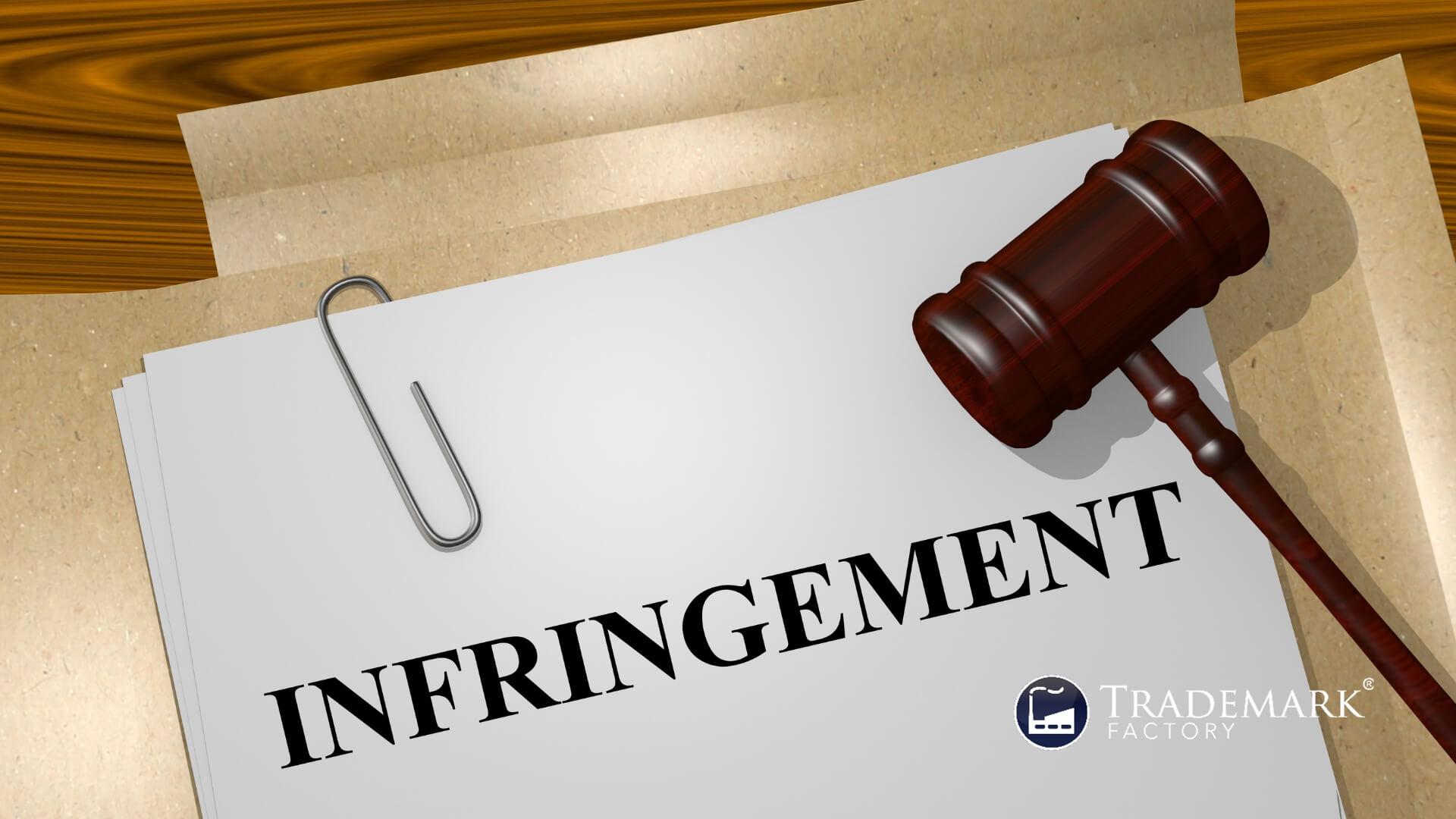Class Acts Understanding Trademark Classes for Effective Brand Protection

This article aims to provide a comprehensive understanding of trademark search and classes and their significance in ensuring effective brand protection. By exploring the role of trademark classes and search selection in startup branding, identifying the appropriate class for a particular startup, and navigating overlapping classes during registration, readers will gain valuable insights into selecting the most suitable classes for their trademarks. Additionally, this article offers strategies for avoiding infringement through an analysis of class specifications and provides advanced tips for startups conducting multi-class trademark searches.
Key Takeaways

- The selection of the right trademark class impacts brand positioning and international expansion.
- Continuous monitoring of trademark classes is essential for brand protection.
- Strategic selection maximizes brand value and contributes to a cohesive brand identity.
- Understanding class descriptions helps to avoid conflicts and infringement.
Understanding the Importance of Trademark Classes in Startup Branding

The understanding of trademark classes in startup branding is crucial for ensuring effective brand protection and maintaining consistency in brand messaging. The selection of the right trademark class has a significant impact on brand positioning, as it determines the scope of protection and distinctiveness of the brand. Moreover, effectively leveraging trademark classes can facilitate international expansion by providing consistent protection across different jurisdictions. Continuous monitoring of trademark classes is essential for brand protection, while strategic selection helps maximize brand value. Ensuring consistency across different trademark classes contributes to a cohesive brand identity.
Transition: Understanding the importance of trademark classes lays the foundation for identifying the appropriate class for your startup without compromising its unique positioning and recognition.
How to Identify the Appropriate Trademark Class for Your Startup

To identify the appropriate trademark class for a startup, it is crucial to thoroughly analyze the nature of the products or services offered. Conducting thorough research on trademark classes is important as it directly impacts brand protection. Startups should consider several factors when selecting the right class, such as the nature of their goods/services and future expansion plans. Common pitfalls in identifying the appropriate class should be avoided. Interpreting class specifications accurately is necessary for conducting effective search results and ensuring brand protection. Understanding trademark classes plays a pivotal role in avoiding infringement.
The Role of Trademark Classes in Avoiding Infringement

One way to avoid infringement is by accurately interpreting and applying the appropriate specifications within trademark classes. Trademark classes play a crucial role in international brand protection, as they categorize goods and services for registration purposes. Handling class conflicts in trademark registration requires careful consideration and understanding of the specific class requirements. Improper class selection can lead to trademark infringement, as seen in various case studies. Effective management of trademark portfolios across multiple classes is essential for comprehensive brand protection. Furthermore, trademark classes also play a significant role in online brand management. Transitioning into the subsequent section about the comprehensive guide to trademark classes and goods/services description, it is important to understand how these classes are structured and their significance in protecting brands worldwide.
Comprehensive Guide to Trademark Classes and Goods/Services Description

A thorough understanding of the structure and distinct features of trademark classifications is essential for accurately describing goods or services within these categories. This knowledge allows businesses to effectively protect their brands and avoid infringement. To help you grasp the concept, consider the following:
- Understanding classification:
- Familiarize yourself with the different classes and their specific scope.
- Recognize how each class categorizes goods or services based on similarity.
- Describing goods/services:
- Learn how to craft precise descriptions that fit within a particular class.
- Utilize appropriate terminology to ensure clarity and accuracy.
- Real-world examples:
- Explore practical illustrations of how goods or services are classified in trademark classes.
Strategies for Navigating Overlapping Classes in Trademark Registration

Navigating the challenges of overlapping classes in trademark registration requires careful consideration of potential conflicts and the development of strategies to mitigate them. Overlapping class disputes can arise when multiple trademarks are registered within the same class, leading to conflicts in brand protection. To effectively handle these conflicts, trademark class conflict resolution strategies should be employed. Dealing with conflicting trademark registrations involves conducting thorough research, negotiating agreements, or pursuing legal action if necessary. Legal considerations play a crucial role in resolving overlapping class disputes, ensuring fair and equitable outcomes for all parties involved.
Transition: Moving forward to the subsequent section on "trademark class search: tools and resources for startups," it is essential to understand how startups can effectively conduct searches within trademark classes to secure their brand identity without infringing on existing trademarks.
Trademark Class Search: Tools and Resources for Startups

To effectively search for trademarks within specific classes, startups can utilize various online tools and resources that provide comprehensive information about existing trademarks and potential conflicts. These tools and resources include:
1. Online databases: Explore popular online databases for comprehensive trademark class searches.
2. Trademark class search engines: Discover specialized search engines designed specifically for trademark class identification.
3. Industry-specific resources: Find industry-specific resources that provide guidance on trademark classes for startups in your field.
In addition to these, it is also recommended to consider consulting with legal service providers who can assist with trademark class searches and registration, as well as engaging with startup communities and forums to gather insights and recommendations on effective trademark class search tools and resources.
This subtopic will now transition into the subsequent section about interpreting trademark class specifications for an effective search.
Interpreting Trademark Class Specifications for Effective Search

Interpreting trademark class specifications requires a careful analysis of the specific goods or services included within each class to ensure accurate and comprehensive search results. Understanding class distinctions and interpreting class descriptions are essential for effective trademark searches. Common misconceptions in class interpretation can lead to inaccurate results. To refine search strategies, startups can employ various strategies such as focusing on core products/services, consulting industry-specific resources, and seeking legal advice when necessary. It is important to avoid pitfalls in class interpretation to establish strong brand protection.
| Class Number | Class Description |
|--------------|------------------|
| Class 1 | Chemical Products |
| Class 2 | Paints |
| Class 3 | Cosmetics |
| Class 4 | Industrial Oils |
Transitioning into the subsequent section about 'key considerations when selecting classes for startup trademarks,' it is crucial for startups to carefully evaluate their business offerings and target market to determine appropriate classes that align with their brand identity and provide adequate protection.
Key Considerations When Selecting Classes for Startup Trademarks

When selecting classes for startup trademarks, class selection careful consideration should be given to the alignment between the chosen classes and the startup's target market and business offerings. To ensure effective brand protection, startups should prioritize trademark classes based on their relevance to their products or services. Understanding class descriptions is crucial in avoiding potential conflicts in class selection. Additionally, international considerations play a significant role in selecting appropriate classes for global expansion. The role of class selection in brand differentiation cannot be underestimated as it helps establish a unique identity. Transitioning into the subsequent section about common mistakes to avoid in trademark class selection, startups must be aware of certain pitfalls when choosing classes for their trademarks.
- Prioritizing trademark classes based on relevance
- Understanding class descriptions to avoid conflicts
- Considering international expansion when selecting classes
Common Mistakes to Avoid in Trademark Class Selection

One important factor to consider in trademark class selection is ensuring the chosen classes accurately reflect the nature of the products or services being offered. Common mistakes in trademark class selection can have significant consequences on the registration process and overall brand protection. Case studies on class selection mistakes highlight the potential repercussions for businesses. To avoid these errors, it is crucial to follow tips for avoiding class selection errors and prioritize precise class selection. With a solid understanding of common mistakes, startups can move on to advanced tips for conducting multi-class trademark searches.
Advanced Tips for Startups Conducting Multi-class Trademark Searches

This discussion aims to provide startups with advanced tips for conducting multi-class trademark searches. It will begin by offering a step-by-step guide on class identification, emphasizing the importance of precise class selection in avoiding infringement. Additionally, it will provide a comprehensive guide to the various trademark classes and actionable strategies for navigating and resolving conflicts that may arise during the search process. Finally, it will highlight key online tools and resources that can assist startups in efficiently conducting their searches.
Provide a Step-by-Step Guide on Class Identification
To provide a step-by-step guide on class identification, it is essential to understand the distinct characteristics and scope of each trademark class. The following tips will help startups navigate this process effectively:
- Conduct a thorough analysis of your goods or services description.
- Research and study the specific classes that align with your business activities.
- Seek legal consultation to ensure precise class identification and avoid potential infringement.
Understanding the importance of precise class selection helps in avoiding infringement by ensuring that your trademark is adequately protected within the relevant classes.
Emphasize How Precise Class Selection Helps in Avoiding Infringement
Emphasizing the significance of precise class selection facilitates the avoidance of infringement by ensuring that the trademark is adequately safeguarded within its relevant areas. Practical examples showcase how selecting the correct trademark class can help avoid potential conflicts with existing trademarks. This not only protects a brand's reputation and growth but also minimizes legal consequences and potential damages associated with incorrect class selection. Proactive measures, such as conducting thorough research and consulting legal experts, contribute to accurate class selection and effective brand protection. The subsequent section will offer a comprehensive guide to the various trademark classes available for selection.
Transition sentence: Understanding the importance of precise class selection, it is crucial to offer a comprehensive guide to the various trademark classes without compromising on accuracy and suitability.
Offer a Comprehensive Guide to the Various Trademark Classes
A comprehensive guide that provides accurate and suitable information about the various classifications used in trademark registration is essential for startups to make informed decisions. Understanding the importance of trademark class differentiation is crucial as it helps businesses protect their brand effectively. The impact of global markets on trademark class selection cannot be ignored, as it requires startups to consider international regulations and variations in classification systems. E-commerce startups need to be aware of the trademark class implications specific to their industry, while tech industry startups must also consider unique trademark class considerations. Furthermore, trademark classes play a significant role in international expansion by ensuring consistent brand protection across borders. Transitioning into the subsequent section, actionable strategies for navigating and resolving conflicts will be provided.
Provide Actionable Strategies for Navigating and Resolving Conflicts
Navigating and resolving conflicts arising from overlapping classes require the implementation of strategic approaches that prioritize clear communication, compromise, and a commitment to finding mutually beneficial solutions. Effective conflict resolution strategies include proactive conflict identification techniques, such as regular communication and monitoring systems. Negotiation techniques can also play a vital role in resolving conflicts by facilitating open dialogue and encouraging compromise. Successful case studies provide valuable insights into real-world examples where these strategies have been successfully implemented. These approaches will be further supported by highlighting key online tools and resources for efficient searches.
Highlight Key Online Tools and Resources for Efficient Searches
In order to streamline the search process and maximize search efficiency, startups can utilize various online search tools and resources. These tools provide effective search techniques and offer valuable resources for efficient searches. To help startups navigate through the vast amount of information available, user-friendly tools have been developed specifically for their needs. By leveraging these resources, startups can streamline their search process and ensure accurate results. The next section will guide startups on how to use class specifications effectively without overwhelming them with unnecessary steps.
Guide Startups on How to Use Class Specifications Effectively
To enhance the efficiency of their search process, startups can adopt strategies that optimize the utilization of class specifications. Effective classification techniques for startup trademarks are crucial for brand protection strategies. By maximizing trademark class selection, startups can increase their chances of success in protecting their brands. However, identifying suitable trademark classes can present challenges. Startups can overcome these challenges by leveraging class specifications for trademark infringement prevention. In the subsequent section, we will explore strategic elements startups should consider in class selection.
| Key Points | Description |
| --- | --- |
| Effective classification techniques | Strategies to classify startup trademarks efficiently |
| Impact of class specifications | Understanding how class specifications affect brand protection strategies |
| Maximizing trademark class selection | Utilizing appropriate classes to maximize startup success |
| Overcoming challenges | Addressing difficulties in identifying suitable trademark classes |
| Leveraging class specifications | Using class specifications to prevent trademark infringement |
In the subsequent section, we will explore strategic elements startups should consider when selecting appropriate trademark classes without explicitly using 'step'.
Explore Strategic Elements Startups Should Consider in Class Selection
Strategic elements that startups should consider when selecting appropriate classes for their trademarks involve evaluating the relevance of the chosen class to the nature and scope of their products or services. To ensure effective brand protection, startups should also take into account the importance of international class selection for global expansion, considering industry specific classes for targeted brand protection, and balancing broad and narrow class selection for comprehensive trademark coverage. Additionally, they need to evaluate the potential for class expansion in future market opportunities and address the challenges of class selection for startups in niche industries. Understanding these strategic elements will enable startups to make informed decisions in their class selection process.
- Importance of international class selection for global expansion
- Ensures trademark protection in multiple countries
- Facilitates entry into new markets with consistent branding
- Helps establish a strong global presence
- Considering industry specific classes for targeted brand protection
- Provides focused protection within a particular industry
- Prevents confusion or infringement by competitors in the same field
- Enhances brand recognition among target audience
- Balancing broad and narrow class selection for comprehensive trademark coverage
- Broad classes offer broader protection across various product categories
- Narrow classes provide more precise protection within specific product categories
- Achieves a balance between flexibility and specificity based on business needs
Evaluating the potential for class expansion in future market opportunities allows startups to plan ahead and protect their trademarks as they expand into new areas. However, startups may face challenges in niche industries where there might be limited or unconventional classes available. These challenges can be addressed through careful research and consultation with legal professionals specializing in intellectual property law.
Transition: By understanding these strategic elements and taking them into consideration during the class selection process, startups can ensure effective brand protection. It is important to identify common errors that occur during this process to further enhance trademark registration success.
Identify and Avoid Common Errors in the Class Selection Process
Common errors in the class selection process can hinder the successful registration of trademarks and compromise their intended scope of protection. To avoid these pitfalls, it is crucial to employ effective search strategies and engage in precise class selection. Common errors include inadequate research, which leads to insufficient understanding of class descriptions, and failure to anticipate future business expansion, resulting in limitations on trademark protection. The next section will address the challenges and intricacies of conducting multi-class searches without simply providing a step-by-step guide.
Address the Challenges and Intricacies of Conducting Multi-class Searches
The challenges and intricacies of conducting multi-class searches require careful consideration of the diverse range of products and services encompassed within different classes. To address these complexities, startups face several branding challenges and must develop efficient class identification strategies. In order to avoid trademark infringement, businesses should implement effective infringement avoidance strategies. However, it is crucial to also be aware of common mistakes in trademark class selection. To navigate these challenges successfully, startups can benefit from user-friendly interfaces that simplify the multi-class search process.
- Explore the complexities associated with multi-class searches
- Understand the branding challenges faced by startups in this context
- Identify efficient strategies for class identification and infringement avoidance
Frequently Asked Questions

Can I Use the Same Trademark in Multiple Trademark Classes?
Using the same trademark in multiple classes offers flexibility, maximizes brand protection, aids navigation of complex industries, considers international impacts, and avoids infringement risks. Comprehensive research is crucial for success.
What Happens if My Startup's Goods or Services Don't Neatly Fit Into a Single Trademark Class?
Potential challenges may arise if a startup's goods or services do not fit neatly into a single trademark class. Strategies for classification should be employed to address this issue, as it can impact brand protection and have legal implications, especially when considering international expansion.
Is It Possible to Change the Trademark Class for My Startup's Trademark After It Has Been Registered?
Changing the trademark class for a registered trademark can have potential consequences. To request a change, follow specific steps outlined by relevant authorities. Thorough research is crucial to avoid common mistakes when selecting a trademark class or exploring alternative options.
How Do I Determine the Appropriate Trademark Class for a New Product or Service My Startup Is Launching?
Factors to consider when determining the appropriate trademark class for a new product or service include understanding the classification system and its importance for brand protection. Common mistakes should be avoided, and trademark attorneys can assist with international expansion.
Are There Any Limitations on the Number of Trademark Classes That My Startup Can Register Its Trademark In?
The number of trademark classes that a startup can register its trademark in is not limited. However, it is important to consider the benefits and challenges of registering in multiple classes, as well as the impact on brand protection and differentiation.
Conclusion

In conclusion, understanding trademark classes is essential for effective brand protection. By identifying the appropriate class for their startup, entrepreneurs can ensure that their brand receives the necessary legal protection. Trademark classes also play a crucial role in avoiding infringement and navigating overlapping classes during registration. Startups should carefully interpret class specifications to conduct effective searches and consider key factors when selecting classes for their trademarks. Avoiding common mistakes and following advanced tips will further enhance the success of multi-class trademark searches for startups.
Subscribe to Trademark Wednesdays, our weekly newsletter where we'll send fun and informative trademarking topics straight to your inbox.




